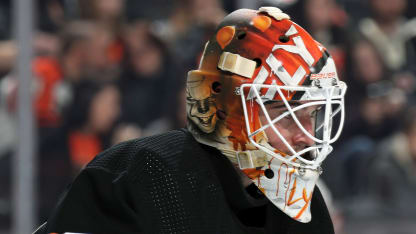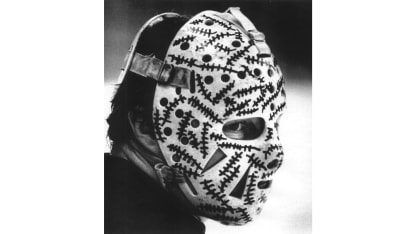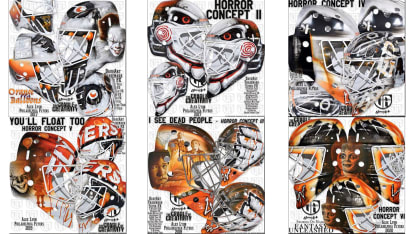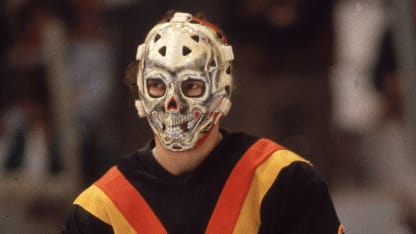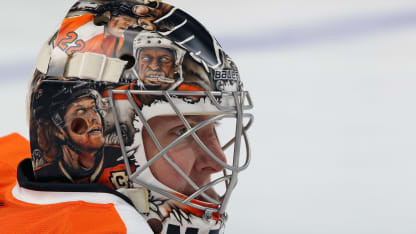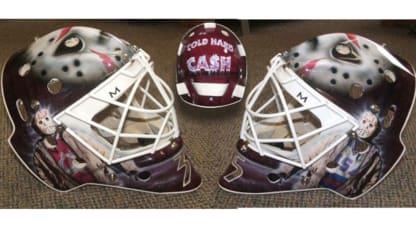Though many of these Halloween and horror-themed masks have become iconic, current mask painters have noticed a decline in the requests for such designs.
"I'm fascinated by skulls, but there's not much demand for that kind of stuff on goalie masks," said Sylvie Marsolais, who painted the masks for the No. 1 goalies in last season's Stanley Cup Final, Andrei Vasilevskiy of the Tampa Bay Lightning and Anton Khudobin of the Dallas Stars, at her Sylabrush studio in Quebec. "I think to get a horror or Halloween theme, the goalie needs to be a huge fan. It's not just about having a frightening paint job, because the paint job itself is an extension of his personality."
Ironically, the mask that essentially first linked hockey and horror films wasn't decorated to look scary at all. That would be the simple, white one used by Jacques Plante of the Montreal Canadiens, who became the first goalie to wear a mask in an NHL game Nov. 1, 1959 -- the day after Halloween, no less -- and a similar look became iconic for different reasons a little more than two decades later.
"I get a kick out of everyone referring to it as the Jason mask," Harrison said. "Most don't recognize or know that it basically was an early version of the store-bought Plante mask. They just marked it up and distressed it to make it look more sinister."
